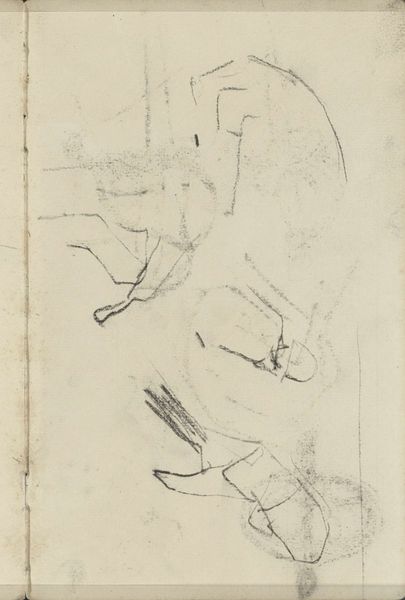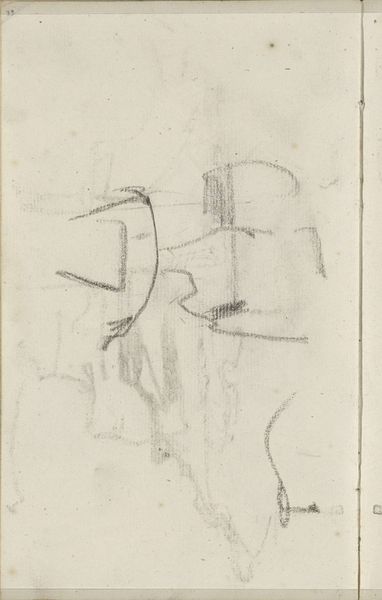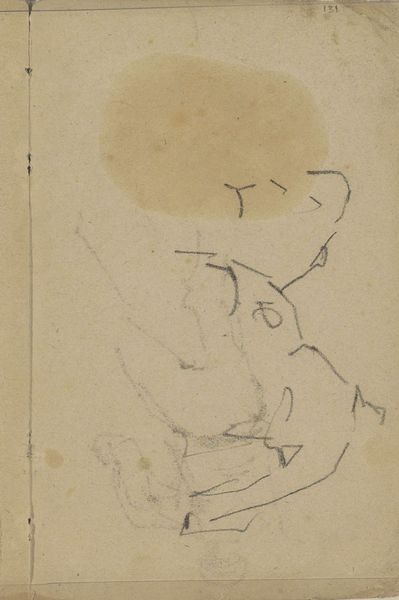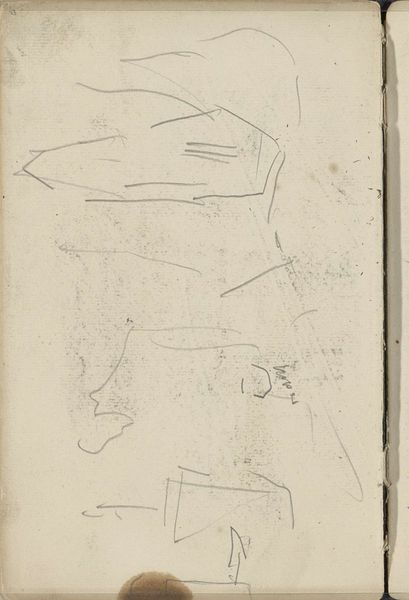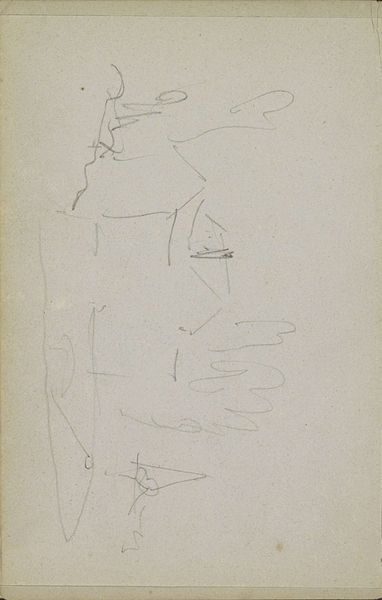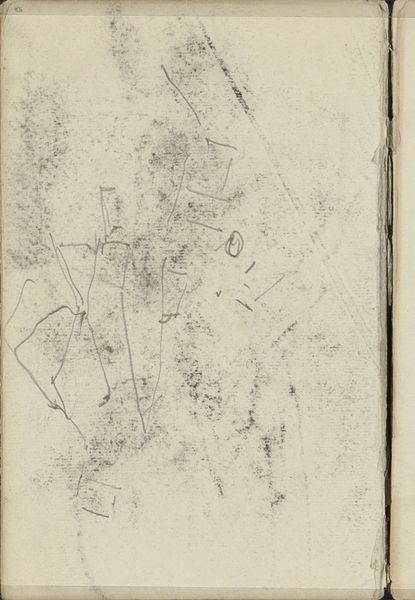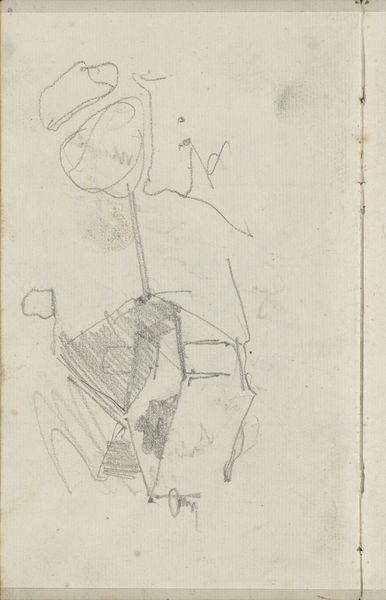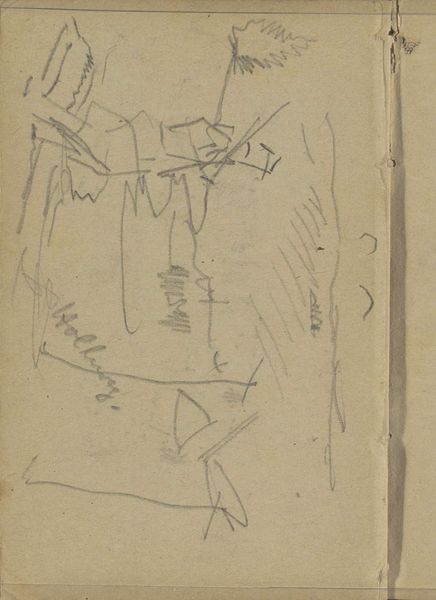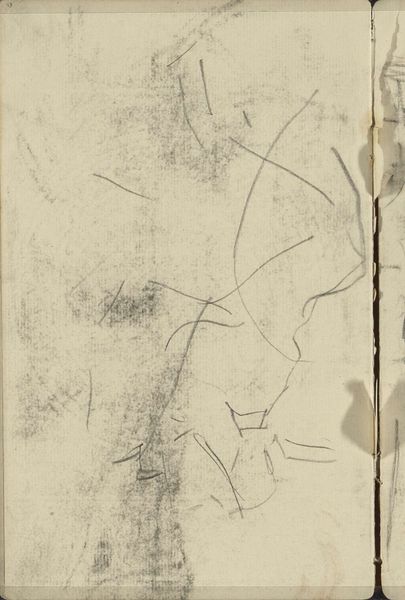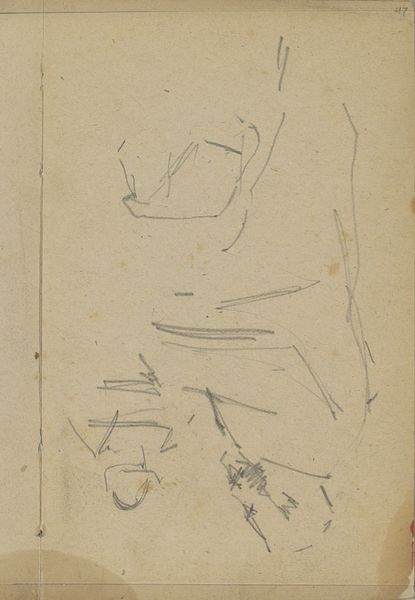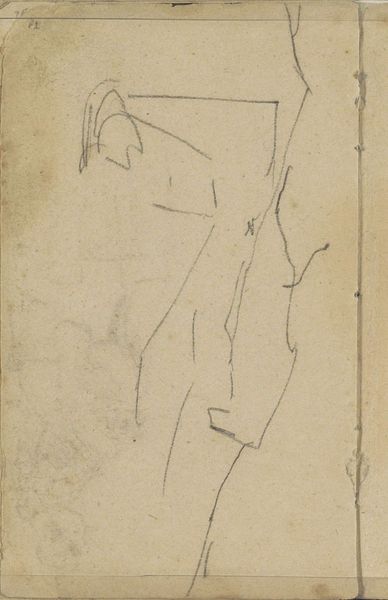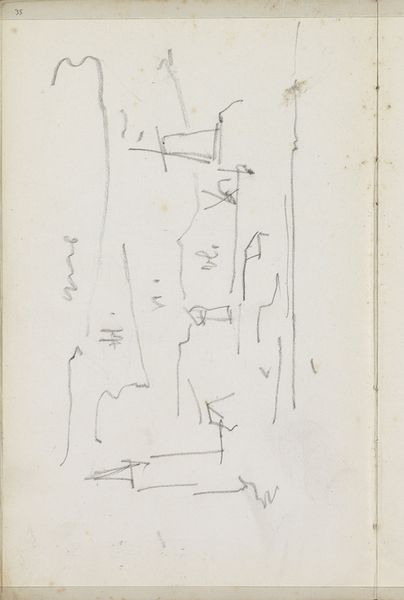
Copyright: Rijks Museum: Open Domain
Editor: This is *Figuurstudies* by Isaac Israels, created sometime between 1875 and 1934. It’s a pencil drawing currently held at the Rijksmuseum. It feels very raw and immediate – just the barest suggestion of forms. What catches your eye in this piece? Curator: The austerity of the composition commands attention. Notice the artist's deliberate economy of line. Each mark serves a critical function in defining the contours and volumes of the figures represented. Editor: So, it's less about representing figures accurately and more about how those lines interact on the page? Curator: Precisely. We must consider the structural relationship between line, form, and the void of the paper. How do the positive and negative spaces contribute to the overall dynamism? Observe, for example, the relationship between the weight of the drawn lines and the apparent weight of the forms they delineate. Editor: It seems like he’s trying to capture the essence of a pose with as few lines as possible. Was this a common approach at the time? Curator: One might contextualize it within a broader discussion of Impressionism, yet, crucially, we must maintain focus on the internal coherence of the artwork itself. To what extent does this drawing achieve its own self-referential system? Note the strategic placement of these few lines, creating a balance within the rectangular picture plane. Editor: It's fascinating how much information he conveys with so little. I'm now looking at how he places them, rather than just what they are. Curator: Yes, shifting from subject to structural rendering will help to expose meaning in the visual language of the work. Editor: Thanks for pointing that out. I think I see a new appreciation for how little you can use to say so much when you work carefully. Curator: Agreed. Let us never lose sight of the unique visual experience afforded by each work of art, to be celebrated and interpreted solely through analysis of what is rendered for us to observe.
Comments
No comments
Be the first to comment and join the conversation on the ultimate creative platform.
